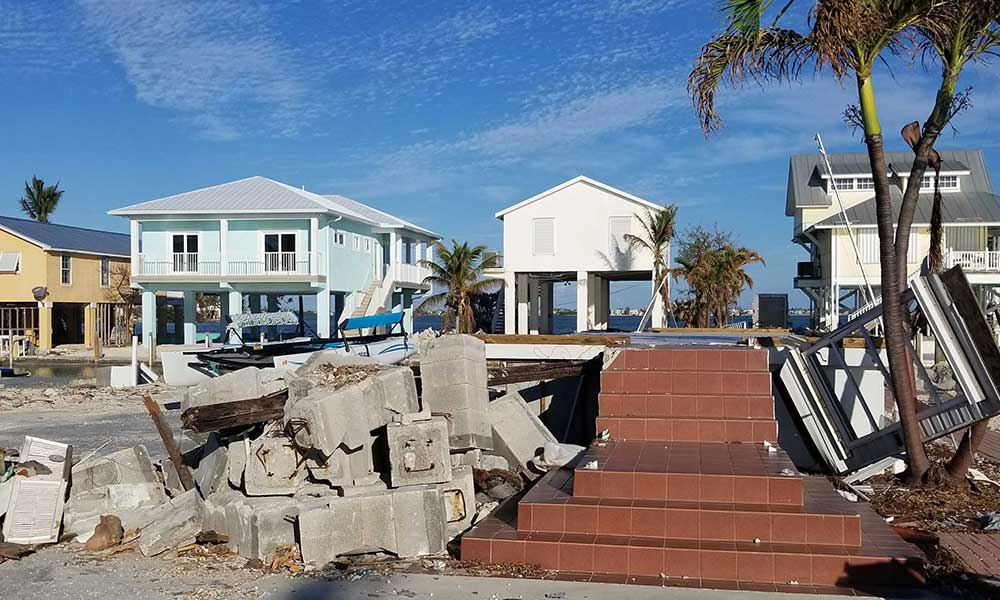Warning to readers: This is not my usual single-focus essay.
It is a collage of news from two coastal states with an assortment of serious natural
hazards challenges—Florida and California. In recent years, their politics has
tended to diverge widely, but perhaps we are seeing a welcome convergence to
some degree around climate issues. It is about time: Both face severe and
unrelenting challenges, and there is little time to waste in identifying and
implementing effective solutions.
Let’s start with Florida.
For starters, they are getting significant help from The Nature Conservancy (TNC), an
organization that has long performed great work in preserving open space and
researching the values of green infrastructure. For years, I have heard about
the merits of coastal mangroves in mitigating hazards such as storm surge and
coastal erosion. Recently, TNC employed an insurance industry catastrophe model
to quantity the economic benefits of mangrove forests for
reducing coastal storm damages in Collier County, and from Hurricane Irma, which struck
parts of Florida in 2017. For those unfamiliar with the area, Collier County is
in southwest Florida running from Naples on the Gulf of Mexico coast east into
the Big Cypress Nature Preserve,
which lies just north of Everglades
National Park.
To quote the TNC website, “Many areas in the county received over $1 million in benefits every year
in flood damage reduction benefits due to the mangroves in front of them.”
Moreover, “Mangroves averted $1.5 billion in storm damages, amounting to a 25%
savings in counties that have mangroves. They also protected more than 626,000
people across Florida.” You can access the full report, Valuing the
Flood Risk Reduction Benefits of Florida’s Mangroves, here.
While TNC could be expected to take
climate change and natural hazards seriously, Florida Republican officials are
another matter. It is thus heartwarming to learn in
a new Associated Press article that first-term Gov. Ron DeSantis has helped turn the page,
along with some Republican lawmakers, on the climate denial that prevailed under
his predecessor and now current U.S. Senator, Rick Scott. It also appears
that Sen. Marco Rubio has
joined a bipartisan Senate
Climate Solutions Caucus launched in October. While one should not expect
the sort of wholehearted embrace of climate issues that one sees among progressive
Democrats, that is not necessary for one to appreciate the value of a return to
a bipartisan approach to an issue where Republican support (and connection to
reality) has in recent years been woefully lacking, especially under President Trump.
Shifting public perceptions have driven political change in both California and
Florida, and it is about time. Southern Florida has been awash in nuisance flooding
driven by sea level rise, and pollution has threatened the environmental
viability of the Everglades. If Republicans are finding a need to appeal to
voters through climate action, that is, on balance, a far better thing for the
political system than a hyper-partisan battle of acceptance of reality versus
denial. It is also not surprising that two highly vulnerable states with major
natural hazard threats would be in the forefront.
Of course, California under former Gov. Jerry Brown went all
in on confronting climate change, in part because of the motivating impact of
increasingly frequent and violent wildfires and lengthening wildfire seasons.
If anything, current Gov. Gavin Newsom
may be picking up the pace, but it is worth nothing that even former Republican
Gov. Arnold
Schwarzenegger has long acknowledged climate change and advocated effective
state and federal action in response. But let me keep this post short and to the
point. I recently taped some introductory material for new additions to the
American Planning Association’s Resilience Roundtable
podcast series, for which I will soon be moderating several new installments to
be released in the coming year. But two new podcasts involve interviews by Prof. William
Siembieda of California Polytechnic
State University in San Luis Obispo, with planners from Butte County. The
first is already available, in which he discusses the impact and recovery
from the Camp Fire,
which destroyed much of the city of Paradise, with senior planner
Dan Breedon. The second interview will appear on the Resilience Roundtable
page soon.
Jim Schwab

